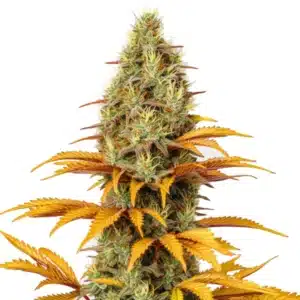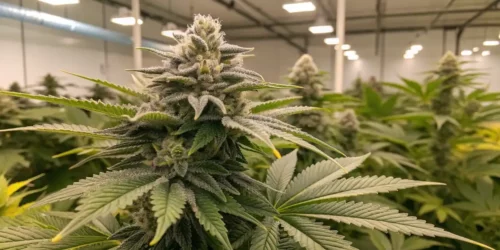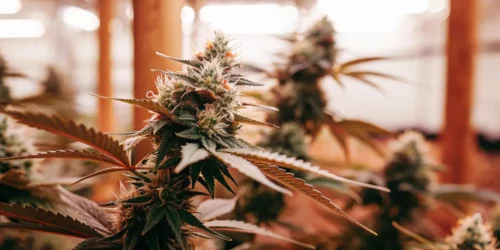Cannabis extraction has emerged as a pivotal process in the world of cannabis, activating the potent and diverse array of compounds that this miraculous plant has to offer. In this comprehensive guide, we will embark on a journey to explore the fascinating realm of cannabis extracts, shedding light on what cannabis extracts are, how they are produced, the vital role of a cannabis extraction technician, and how to use them effectively.
Cannabis Extracts
Cannabis extracts have transformed the way people consume and experience the plant’s therapeutic and recreational benefits. These concentrated forms of cannabis are a diverse and exciting category of products that cater to a wide range of preferences and needs. To truly grasp the world of cannabis extracts, let’s dive deeper into their essence, exploring what they are, how they’re made, and the various types available.
Promos & Deals
What Are Cannabis Extracts?
Cannabis extracts are highly potent substances derived from the cannabis plant, containing a concentrated blend of its bioactive compounds. Unlike consuming the whole flower, which involves combusting or vaporizing the entire bud, extracts allow users to enjoy the benefits of specific cannabinoids, terpenes, and other valuable compounds in a more concentrated form.
The Extraction Process

To create cannabis extracts, manufacturers employ a variety of extraction methods. These methods aim to isolate and concentrate desired compounds while leaving behind unwanted plant material. Some of the most common extraction methods include:
- Solvent-Based Extraction: This technique involves using solvents like butane, propane, ethanol, or supercritical CO2 to dissolve cannabinoids and terpenes from the plant material. After extraction, the solvent is typically removed, leaving behind a concentrated oil or resin.
- Mechanical Separation: Mechanical methods, such as dry sift and ice water hash, physically separate trichomes (resin glands) from the plant material. These techniques do not require solvents and produce solventless concentrates.
- Rosin Pressing: Rosin is created by applying heat and pressure to cannabis flowers or hash. This process causes the trichomes to release a sticky, resinous substance, which is collected and used as a concentrate.
- Supercritical Fluid Extraction: Supercritical CO2 is used to selectively extract cannabinoids and terpenes. This method is highly precise and is known for its ability to produce clean and pure extracts.
- Hydrocarbon Extraction: Hydrocarbon solvents like butane and propane are used to dissolve cannabis compounds. This method is efficient but requires strict safety precautions due to the flammability of the solvents.
- Ultrasonic Extraction: High-frequency sound waves are employed to break down plant cell walls and release cannabinoids and terpenes.
- Steam Distillation: Steam is passed through the plant material, causing volatile terpenes to evaporate and then condense into a separate container.
Types of Cannabis Extracts
Cannabis extracts come in a wide variety of forms, each offering a unique experience. Some of the most popular types of extracts include:
- Cannabis Oil: A versatile extract used in various applications, including tinctures, edibles, and vape cartridges.
- Shatter: A glass-like, translucent concentrate with high potency. It is often dabbed or vaporized.
- Wax: A softer, opaque concentrate that is easy to work with. It is commonly used for dabbing.
- Live Resin: Extracted from freshly harvested, flash-frozen cannabis plants, live resin retains a higher concentration of terpenes, resulting in an intense flavor profile.
- Hash: A classic concentrate created through methods like dry sift or ice water hash. Hash can be smoked, vaporized, or added to joints.
- Rick Simpson Oil (RSO): A thick, full-spectrum oil known for its potential medicinal benefits. It is often used by patients seeking high doses of cannabinoids.
How to Use Cannabis Extracts

Using cannabis extracts varies depending on the type of product. Here are some common consumption methods:
- Dabbing: Dabbing involves vaporizing a small amount of concentrate on a heated surface and inhaling the vapor. It requires specialized equipment like a dab rig or vaporizer.
- Vaping: Vape pens and cartridges are popular for vaporizing cannabis oil extracts. Simply attach the cartridge to a battery and inhale.
- Edibles: Cannabis oil can be infused into food or beverages, offering a discreet and convenient way to consume extracts.
- Tinctures: Tinctures are liquid extracts that can be administered sublingually (under the tongue) for rapid absorption.
- Topicals: Some extracts are used in creams, lotions, or balms for localized relief from pain, inflammation, or skin conditions.
Medicinal Benefits
Cannabis extracts have gained recognition for their potential medicinal benefits, thanks to their precise dosing and diverse cannabinoid profiles. Some common therapeutic applications include:
- Pain Management: Extracts are often used to alleviate chronic pain, inflammation, and neuropathic discomfort.
- Anxiety and Stress Relief: Certain extracts, particularly those rich in CBD, may help reduce anxiety and promote relaxation.
- Seizure Control: CBD-rich extracts have shown promise in reducing the frequency and severity of seizures in individuals with epilepsy.
- Cancer Symptom Relief: Some patients use extracts to manage the side effects of cancer treatments, including nausea, pain, and loss of appetite.
- Sleep Aid: Extracts with sedative properties can assist individuals with sleep disorders in achieving restful sleep.
How Cannabis Extraction Technician
Behind every high-quality cannabis extract lies the expertise of a cannabis extraction technician. These skilled professionals are responsible for meticulously extracting and purifying the desired compounds from the cannabis plant. They employ various techniques, such as solvent extraction, CO2 extraction, or mechanical separation, to obtain the desired results.
The precision and knowledge of these technicians are crucial in ensuring the safety and efficacy of cannabis extracts. They must follow strict quality control standards, closely monitor extraction parameters, and have extensive knowledge of the chemical processes involved in extraction.
What is Cannabis Extract Used For?
Cannabis extracts have a wide range of applications, catering to both medicinal and recreational users. Here are some common uses:
- Medicinal Purposes: Many patients turn to cannabis extracts for their potential therapeutic benefits. They can be used to alleviate pain, reduce inflammation, manage anxiety, and even control seizures. The precise dosing and purity of extracts make them a preferred choice for medical cannabis patients.
- Recreational Use: Cannabis enthusiasts often embrace extracts for their intensified effects. Whether it’s the euphoria of THC-rich extracts or the soothing aroma of terpene-infused oils, extracts offer a diverse and potent experience for recreational users.
- Edibles and Topicals: Cannabis extracts serve as essential ingredients in the creation of edibles and topicals. From infused brownies to soothing balms, extracts add cannabis’s unique properties to various products.
- Vaping: Vaporizing cannabis extracts has gained popularity as an alternative to smoking. It provides a smoother and more discreet way to consume cannabis.
How to Use Cannabis Extracts

Using cannabis extracts may seem daunting, but it can be straightforward with the right guidance. Here are some basic tips on how to use cannabis extract:
- Start Low: If you’re new to extracts, begin with a low dose to gauge your tolerance and sensitivity. The potency of extracts can vary widely, so it’s essential to start conservatively.
- Choose the Right Method: Extracts can be consumed through various methods, including vaporization, dabbing, edibles, or tinctures. Select the method that aligns with your preferences and needs. Vaporization and dabbing provide quick onset, while edibles offer a longer-lasting experience.
- Mind the Concentration: Be aware of the concentration of cannabinoids, especially THC, in the extract. High-THC extracts can be potent, so adjust your dose accordingly. It’s crucial to read product labels and follow dosage recommendations.
- Be Patient: The effects of extracts may take longer to kick in compared to smoking. Give it time before deciding to take more. Overconsumption can lead to discomfort or excessive intoxication.
- Store Properly: To maintain the quality and potency of your cannabis extracts, store them in a cool, dark place, away from direct sunlight and extreme temperatures. Proper storage ensures that your extracts remain effective over time.
Types of Cannabis Extractions: Unleashing the Diversity
Cannabis extraction techniques are as diverse as the compounds they aim to extract. Each method has its unique advantages and is suited to different applications and end products. Let’s explore the fascinating world of cannabis extraction and learn about some common methods used to create the wide array of cannabis extracts available today.
1. Solvent-Based Extractions
Solvent-based extractions involve the use of various solvents to dissolve and separate the desired compounds from the cannabis plant material. Some common solvents include:
- Butane: Butane extraction, also known as BHO (Butane Hash Oil) extraction, is a popular method for creating concentrates like shatter and wax. It is highly efficient in extracting cannabinoids and terpenes. However, it requires careful handling due to the flammable nature of butane.
- Propane: Propane extraction shares similarities with butane extraction but operates at a lower boiling point. It is known for producing high-quality concentrates with robust terpene profiles.
- Ethanol: Ethanol extraction is a versatile method used to create a wide range of products, including tinctures, oils, and RSO (Rick Simpson Oil). It is considered safer than hydrocarbon solvents but may require additional post-processing to remove impurities.
- CO2 (Carbon Dioxide): CO2 extraction utilizes supercritical or subcritical CO2 to extract cannabinoids and terpenes. It is highly customizable, allowing precise control over the extraction process. CO2 extracts are favored for their purity and consistency.
2. Mechanical Separation
Mechanical separation methods involve physically separating the trichomes (resin glands) from the plant material. These methods do not require the use of solvents. Common mechanical separation techniques include:
- Dry Sift: Dry sifting involves sieving the plant material to separate the trichomes. The result is a fine powder, often referred to as kief, which can be pressed into hash or used to enhance the potency of joints or bowls.
- Ice Water Hash: Also known as bubble hash, this method uses ice water and agitation to separate trichomes from the plant material. The trichomes are collected and dried to create a potent concentrate.
3. Rosin Pressing
Rosin pressing has gained popularity for its simplicity and ability to produce solventless cannabis extracts. It involves applying heat and pressure to cannabis flowers or hash, causing the trichomes to release a sticky, resinous substance. This rosin can be collected and dabbed or used in various applications.
4. Supercritical Fluid Extraction
Supercritical fluid extraction, often using CO2, is a precise and efficient method for creating high-quality cannabis extracts. In this method, CO2 is manipulated to become a supercritical state, where it acts as both a gas and a liquid. It can selectively extract cannabinoids and terpenes, leaving behind unwanted compounds.
5. Hydrocarbon Extractions
Hydrocarbon extractions use hydrocarbon solvents like propane and butane to dissolve cannabis compounds. These solvents are highly efficient but require strict safety measures due to their flammability. Products produced through hydrocarbon extraction include shatter, wax, and live resin.
6. Ultrasonic Extraction
Ultrasonic extraction uses high-frequency sound waves to break down plant cell walls and release cannabis compounds. This method is relatively gentle and is often used for creating infused oils and tinctures.
7. Steam Distillation
Steam distillation is a method used primarily for extracting cannabis terpenes. It involves passing steam through the plant material, causing the volatile terpenes to evaporate and then condense into a separate container.
8. Cold Ethanol Extraction
Cold ethanol extraction is similar to traditional ethanol extraction but is performed at low temperatures to preserve delicate terpenes. It is commonly used to produce full-spectrum cannabis extracts.
9. Isomerization
Isomerization involves converting one cannabinoid into another through chemical reactions. For example, it can transform non-psychoactive cannabinoids like CBD into the psychoactive compound THC.
Each of these cannabis extraction methods has its advantages and applications, depending on the desired end product and the specific compounds being targeted. The evolving field of cannabis extraction continues to push the boundaries of what is possible, offering consumers an ever-expanding array of products and experiences to explore.
Exploring the World of Cannabis Extracts
Cannabis extracts have revolutionized the cannabis industry, offering users a convenient and potent way to experience the benefits of the plant. Whether you seek relief from medical conditions, desire an enhanced recreational experience, or want to explore the versatility of cannabis extracts in edibles and topicals, how to use cannabis extracts is the key to unleashing their full potential.
Thanks to the expertise of cannabis extraction technicians, these extracts continue to push the boundaries of what is possible with cannabis. As new techniques and technologies emerge, we can expect even more exciting developments in the world of cannabis extracts. Whether you’re a seasoned cannabis connoisseur or a curious newcomer, exploring the world of cannabis extracts opens up a world of possibilities and experiences that are waiting to be discovered.
















